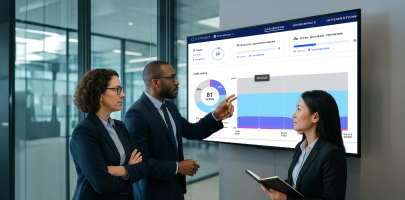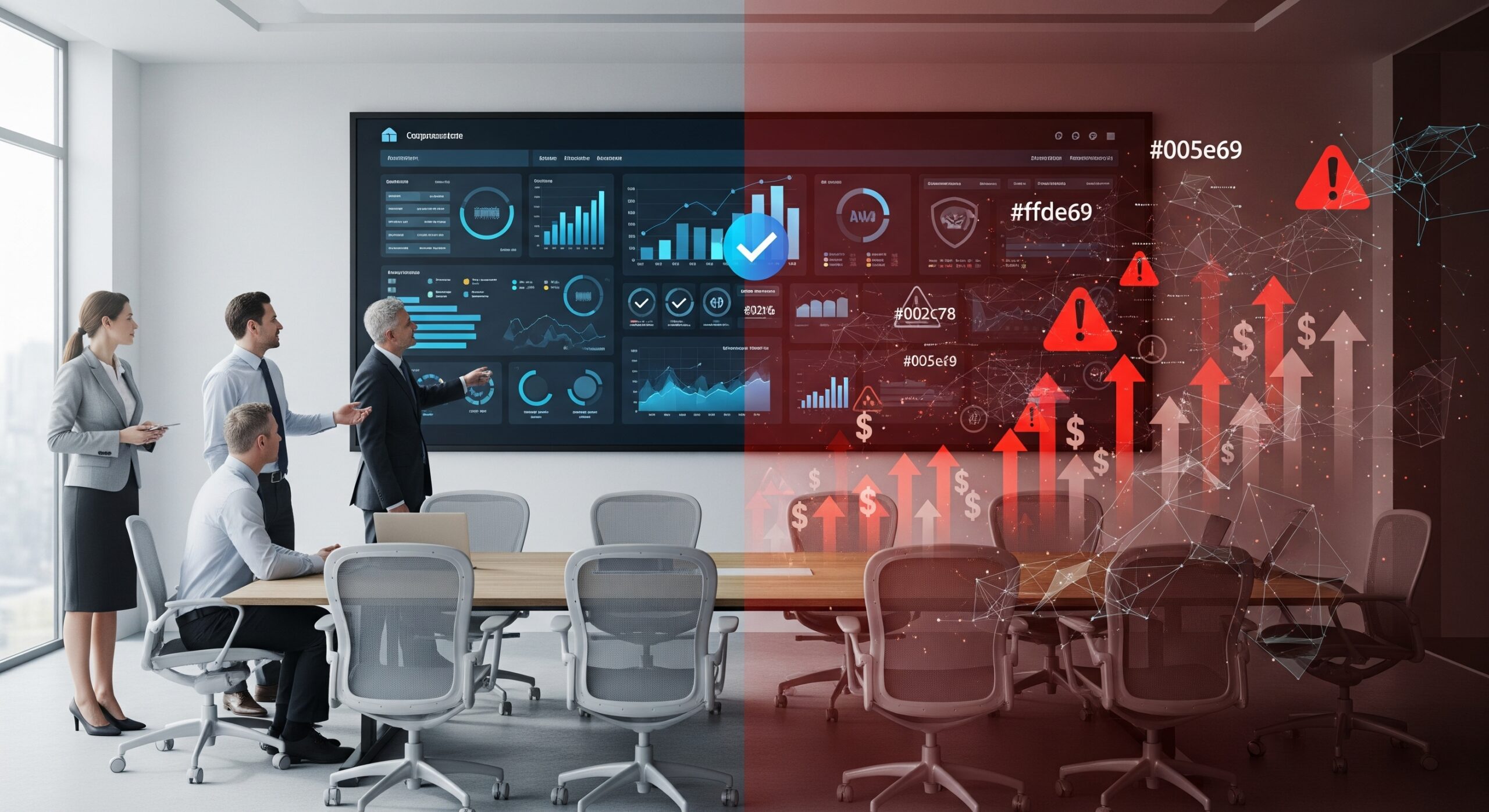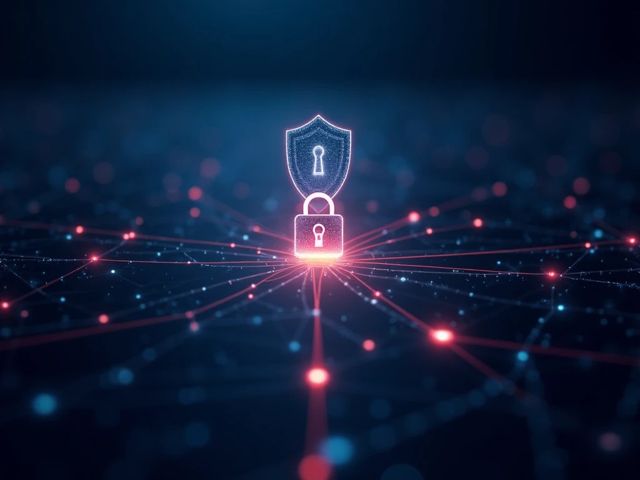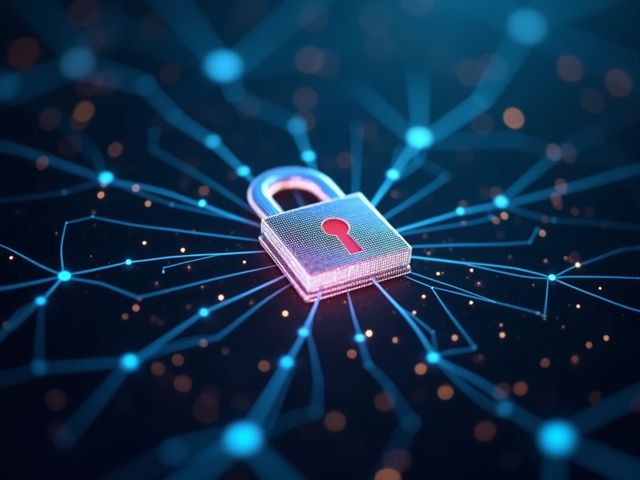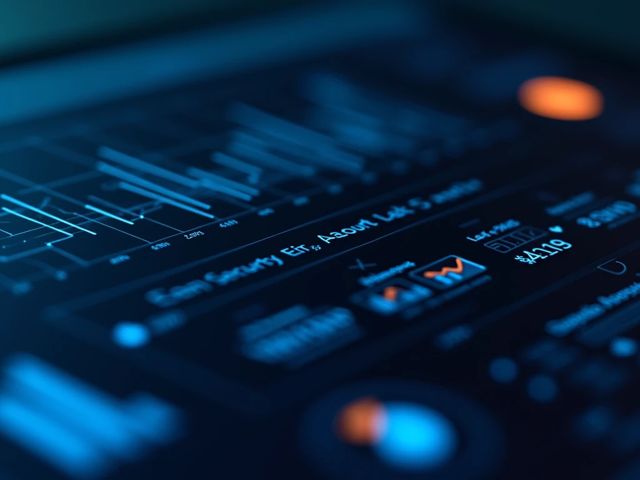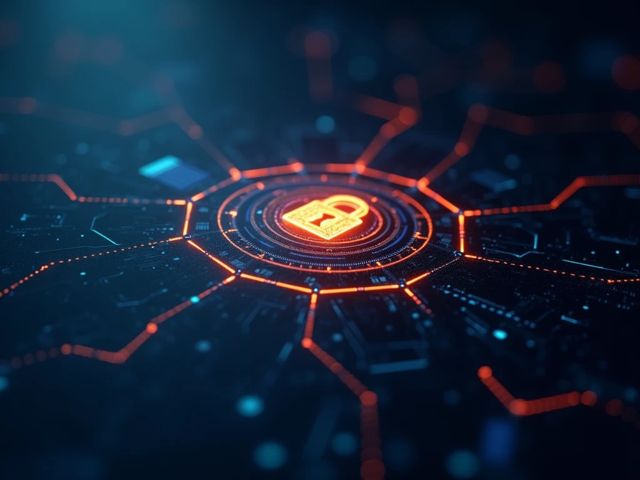Cybersecurity risk management requires a continuous, proactive approach that involves mapping your assets, assessing threats, and implementing tailored mitigation strategies. Automation tools like Cypago enhance these efforts by streamlining processes and enabling rapid, informed responses to evolving risks.
Why Cybersecurity Risk Management Plans Matter Now More Than Ever
The Rising Stakes of Cyber Risk
Cyber risk management now carries more weight than ever before. Organizations contend with an unending stream of threats—cybercriminals, internal errors, and natural disasters—each capable of triggering lost revenue, data theft, regulatory fines, and long-term harm to reputation. Financial losses can be staggering: the average cost of a data breach in healthcare exceeds $10.10 million, and hospitality firms see losses around $2.9 million per incident, according to IBM’s Cost of a Data Breach report.
New vulnerabilities appear constantly, with around 2,000 added to the NIST National Vulnerability Database every month. Simply reacting to incidents no longer works. Organizations need strategies that anticipate risks and structure defenses in advance.
Reputational and Regulatory Pressures
A single breach can undo years of trust with customers. News travels fast, and the consequences go far beyond financial loss. Reputation takes a hit, which can affect market share, business partnerships, and even employee confidence.
Regulatory demands continue to grow. Laws such as GDPR, HIPAA, and PCI DSS require organizations to protect sensitive data and show evidence of responsible security practices. Meeting these standards is now necessary for passing audits and avoiding costly penalties. The NIST Cybersecurity Framework and Risk Management Framework provide trusted, flexible methods to help organizations address these requirements.
The Need for a Proactive, Continuous Approach
Cyber risk management is never finished—it requires ongoing attention. NIST recommends treating it as a continuous cycle, with regular reviews and updates as new threats surface. This approach brings together teams from executive leadership, IT, security, legal, and HR to make sure risks are identified and managed throughout the organization.
Key steps in this process include:
- Risk Framing: Clarify what’s at risk, list all assets, and match security priorities with business and legal needs.
- Risk Assessment: Find and rank threats and vulnerabilities.
- Responding to Risk: Select the right mix of mitigation, remediation, and risk transfer options.
- Monitoring: Regularly check that controls are working and adjust to changes in risk and technology.
For IT leaders, security teams, and compliance professionals, building a strong cyber risk management plan is now a matter of survival. The risks are significant, the consequences can be severe, and a proactive, structured strategy is more important than ever.
Mapping Your Risk Landscape: Identifying What’s at Stake
Understanding What Needs Protection
Building a strong cybersecurity risk management plan begins with figuring out exactly what needs to be safeguarded. Before defending your organization, get a clear sense of your digital assets, business processes, and the threats that could disrupt them. This goes beyond IT—it calls for input from across the business to get a complete picture.
Conducting a Thorough Asset Inventory
Take stock of everything that could be targeted or affected by a cyber event. This includes:
- Hardware: servers, workstations, mobile devices, networking equipment
- Software: operating systems, business applications, cloud services
- Data: customer records, intellectual property, financial information
- Key business processes: payment processing, customer support, supply chain operations
A detailed asset inventory shows what truly matters to your business. Attackers don’t always go after the obvious targets—overlooked systems often become entry points.
Mapping Business Processes That Matter Most
Listing assets is only part of the job; understanding how they support your business is just as important. Map out workflows and dependencies that keep things running. For instance, a disruption in your payment platform could trigger a chain reaction impacting revenue, customer trust, and compliance. This mapping helps pinpoint where a breach or outage would cause the most damage, guiding your priorities in the risk assessment.
Identifying Threats and Vulnerabilities
Modern organizations face a constant stream of risks. The IBM Cost of a Data Breach report notes that healthcare breaches average $10.10 million, and the hospitality sector faces $2.9 million per incident. With around 2,000 new vulnerabilities added monthly to the NIST National Vulnerability Database, the threat environment never stands still.
Threats to keep in mind include:
- Cybercriminals exploiting software flaws
- Employee mistakes or insider threats
- Supply chain attacks
- Natural disasters affecting IT infrastructure
Pair these threats with an honest look at your vulnerabilities. Frameworks like the NIST Cybersecurity Framework can help organize your risk assessment, making it easier to spot and prioritize weaknesses based on business impact.
Involving the Right Stakeholders
No single department sees the full picture. Bring together people from IT, security, legal, HR, and business leadership. Each group brings something different—legal understands regulatory risk, HR knows about insider threats, and business leaders are clear on which processes keep the company afloat. This teamwork covers all angles and aligns your risk assessment with compliance and business needs.
Setting the Stage for Ongoing Risk Management
Mapping your risk environment isn’t something you do just once. The NIST Risk Management Framework points to risk management as a continuous effort. As your organization grows and new threats appear, keep asset inventories, business process maps, and threat models up to date. Staying disciplined with these updates helps you stay ahead of attackers and meet regulatory expectations, showing your commitment during audits and investigations.
Starting with a clear, cross-functional risk assessment sets you up to build a cybersecurity plan that protects what matters most and stays ready for whatever comes next.
Modern Risk Assessment in Action: Frameworks and Best Practices
Putting Modern Risk Assessment to Work
Effective cyber risk management begins with a clear, structured risk assessment process. Threats are always changing, with organizations facing thousands of new vulnerabilities every month—roughly 2,000 are added to the NIST National Vulnerability Database alone. Modern frameworks like the NIST Cybersecurity Framework (CSF) and Risk Management Framework (RMF) help organizations cut through the noise, guiding IT leaders and security teams through practical steps to identify, rate, and prioritize risks.
Frameworks That Deliver Clarity
The NIST CSF has been widely adopted, not just for critical infrastructure, but across all types of organizations. It provides a way to understand and reduce cybersecurity risks, supporting both regulatory compliance and operational resilience. The CSF helps you:
- Profile your current cybersecurity posture
- Identify target outcomes based on your business priorities
- Assess and prioritize gaps
- Develop a roadmap for improvement
The NIST RMF works alongside the CSF, offering a thorough, repeatable seven-step process that weaves risk management directly into your system development lifecycle. These steps include preparing, categorizing assets, selecting and implementing controls, assessing effectiveness, authorizing operations, and continuous monitoring. This process isn’t just theoretical—it’s required for federal agencies and is recognized for being “comprehensive, flexible, repeatable, and measurable” (details on NIST RMF).
Making Assessments Actionable
A risk assessment should be ongoing, not a one-time project. NIST recommends a continuous process, involving everyone from executive leadership to HR and legal. The typical workflow looks like this:
- Risk Framing: Set the context, inventory assets, and clarify business objectives and legal requirements.
- Risk Assessment: Identify threats (such as cybercriminals or employee mistakes), vulnerabilities, and potential impacts. Use up-to-date intelligence, such as CISA’s Known Exploitable Vulnerabilities Catalog.
- Risk Response: Select mitigation, remediation, or risk transfer strategies based on likelihood and impact.
- Monitoring: Keep checking controls and adjust to changes in your IT environment.
To turn assessments into real action, practical tools like checklists and risk matrices can help. These tools break down complicated risks into manageable parts, assign risk ratings, and make it easy to see what to prioritize. A risk matrix, for instance, can quickly highlight which threats demand immediate attention and which can be tracked over time.
Best Practices for Repeatability
- Regular Reviews: Schedule risk assessments at intervals that match your operational needs, not just during audits.
- Stakeholder Involvement: Bring in leaders from both IT and business teams to make sure risk decisions support business goals.
- Document Everything: Keep updated inventories of assets, threats, and controls to support compliance and speed up incident response.
- Leverage Free Tools: Free solutions like CISA’s Cyber Security Evaluation Tool (CSET) can be a big help, especially for small and mid-sized organizations.
A modern risk assessment goes beyond checking boxes. It’s about building an ongoing process that adapts to your organization, helping you stay prepared for whatever comes next.
From Assessment to Action: Building and Implementing Your Risk Response
Moving from Assessment to Action
After completing a risk assessment, the next step involves turning those findings into a practical, clear plan. Cybersecurity risk management isn’t just a one-time task—it’s a continuous process that needs flexibility as threats shift and business goals change.
Choosing Your Risk Response
Each risk you identify calls for a specific approach. Four primary strategies are available:
- Mitigation: Put technical or procedural controls in place to lower the likelihood or impact of a threat. Examples include deploying endpoint protection, using multi-factor authentication, or updating patch management to address common weaknesses.
- Transfer: Pass the risk to a third party, often through cyber insurance or by outsourcing certain functions.
- Avoidance: Change business processes or systems to remove the risk completely, such as retiring an outdated and vulnerable application.
- Acceptance: Recognize the risk and move forward without extra controls, usually when the cost of addressing it is higher than the potential impact.
Choosing an approach involves weighing cybersecurity requirements against business objectives. NIST’s Risk Management Framework (RMF) offers a seven-step process that helps organizations fit these decisions into the system development lifecycle.
Putting Controls in Place
When reducing risk, it’s important to select controls that align with your environment. The NIST Cybersecurity Framework (CSF) has become a common choice across many industries. It highlights a combination of technical, procedural, and organizational controls—from access management and network segmentation to security awareness training.
When deciding on controls, keep in mind:
- The threats and vulnerabilities highlighted in your assessment.
- Regulatory requirements such as GDPR, HIPAA, or PCI DSS, which may require certain controls and reporting.
- Your organization’s risk tolerance and available resources.
Monitoring and Adjusting
Risk reduction requires constant attention. With thousands of new vulnerabilities added each month to the NIST National Vulnerability Database, ongoing monitoring matters. Automated tools can check whether controls are working as planned, and regular reviews help your plan keep up with new threats, tech updates, and business changes.
Connecting Risk Response and Compliance
A strong risk response strategy doesn’t just protect your assets—it helps with compliance, too. Good risk management demonstrates due diligence during audits and investigations, lowering the chance of regulatory fines and reputational harm. Frameworks like NIST’s Privacy Framework help organizations address cybersecurity and privacy risks together, making compliance efforts more efficient.
Keeping the Plan Up to Date
Risk management works best when everyone’s involved. Bring in stakeholders from IT, security, legal, HR, and executive leadership so your plan matches organizational priorities and is prepared for new threats. Review your risk management plan regularly, updating controls and response strategies as threats and business needs shift.
Treat risk mitigation as an ongoing process. This approach builds resilience, supports compliance, and helps organizations keep up with the changing world of cybersecurity.
Supercharging Cyber Risk Management with Automation
Why Automation Is Redefining Security Software
IT leaders and security professionals face growing cyber threats, mounting regulations, and an overwhelming number of controls. With as many as 2,000 new vulnerabilities surfacing each month and compliance costs climbing to $5.5 million on average—a 60% increase over five years—the pressure is on. About 65% of cybersecurity professionals are now turning to automation to simplify compliance and cut expenses.
Platforms such as Cypago are reshaping expectations for security software. By connecting governance, risk, and compliance (GRC) processes, Cypago’s compliance automation changes cyber risk management from a static task to an ongoing process. Teams experience a shift in how they handle security and compliance, with less stress and more control.
Key Benefits of Compliance Automation
1. Fewer Manual Tasks, Greater Strategic Value
Manual work eats up resources and increases the chances of mistakes. Cypago’s automation—driven by AI—removes repetitive work like collecting evidence, running user access reviews, and exporting spreadsheets. Teams using automated platforms have seen their workload drop by up to 35%, letting them focus on more important risk analysis and response efforts.
2. Ongoing Monitoring and Immediate Insight
Checking compliance at set intervals no longer meets today’s needs. With continuous control monitoring, organizations spot compliance gaps and new risks across business units before they turn into audit problems or security breaches. Having timely information allows teams to respond to changing threats and regulatory updates with confidence.
3. Audit Preparation Across Multiple Frameworks
Staying prepared for audits is a constant challenge, especially for organizations working with frameworks like SOC 2, ISO 27001, GDPR, and HIPAA. Automation platforms bring together evidence, standardize processes, and manage requirements across frameworks, making audits quicker and less disruptive.
4. Better Risk Detection and Faster Response
Automated user access reviews reveal who has access to which resources, closing gaps that manual reviews often overlook. This supports compliance efforts and lowers the risk of insider threats and forgotten accounts.
Staying Prepared for New Risks
About 80% of compliance managers have trouble tying cyber risks to business impact. Automation brings better clarity. Platforms like Cypago provide dashboards and analytics that help teams prioritize threats and connect security efforts to business goals.
Industry leaders have noticed this trend. Gartner recognizes Cypago as an important force in the Cyber GRC space, and customers report significant time savings and fewer errors. With regulatory pressure increasing—42% of cybersecurity leaders now face greater legal risk—automation is quickly shifting from a “nice to have” to a must.
For those ready to leave manual headaches behind, compliance automation offers a way to reduce risk, control costs, and adapt to constant change. Interested in seeing this in action? Book a demo or take a closer look at Cypago’s risk management solutions.



